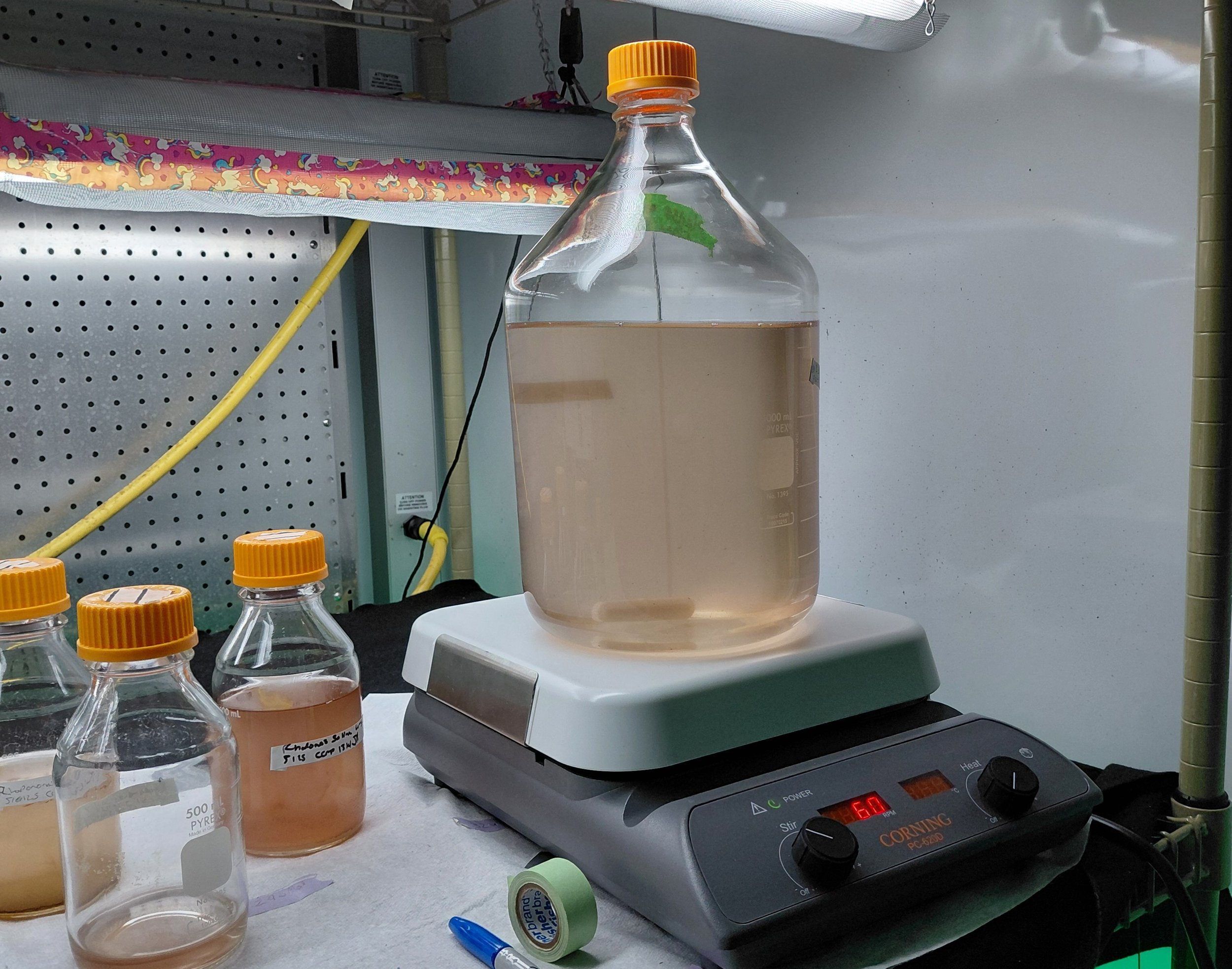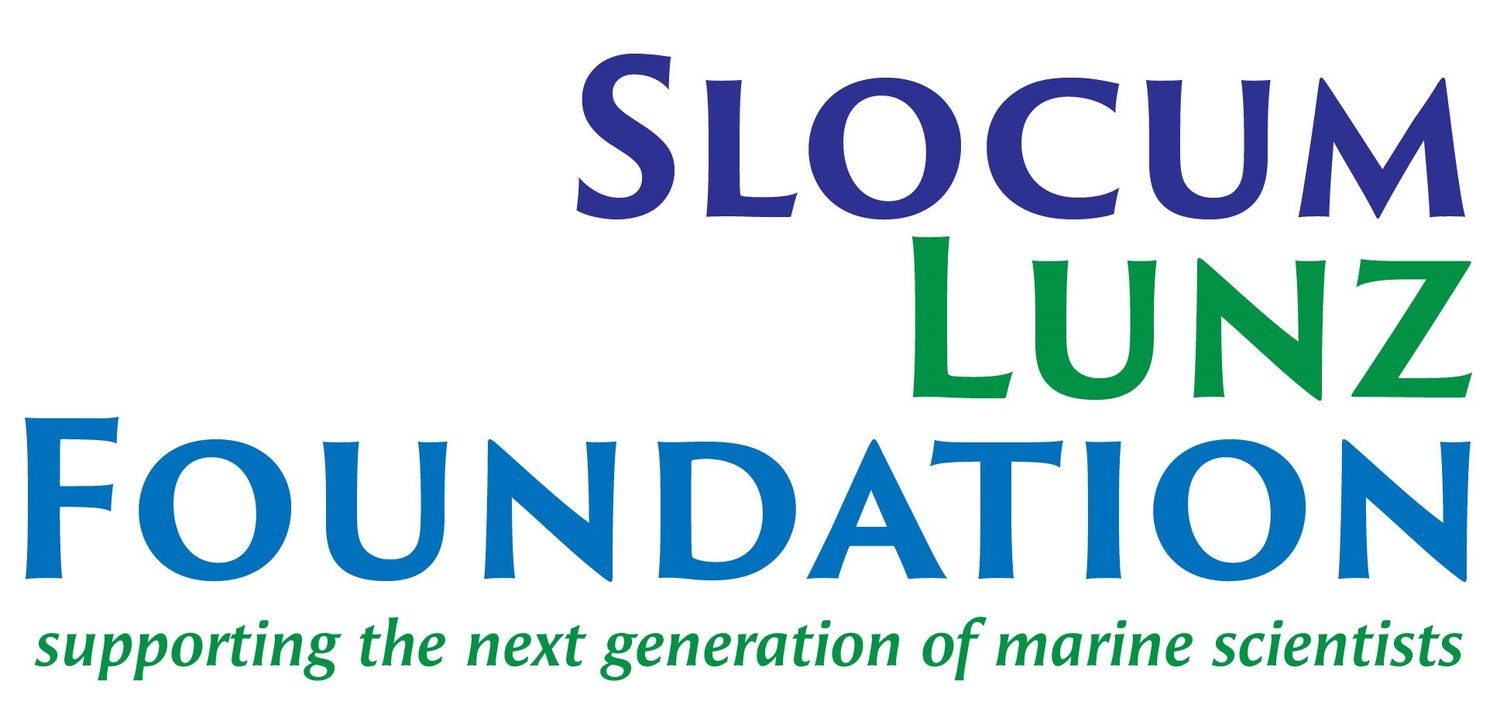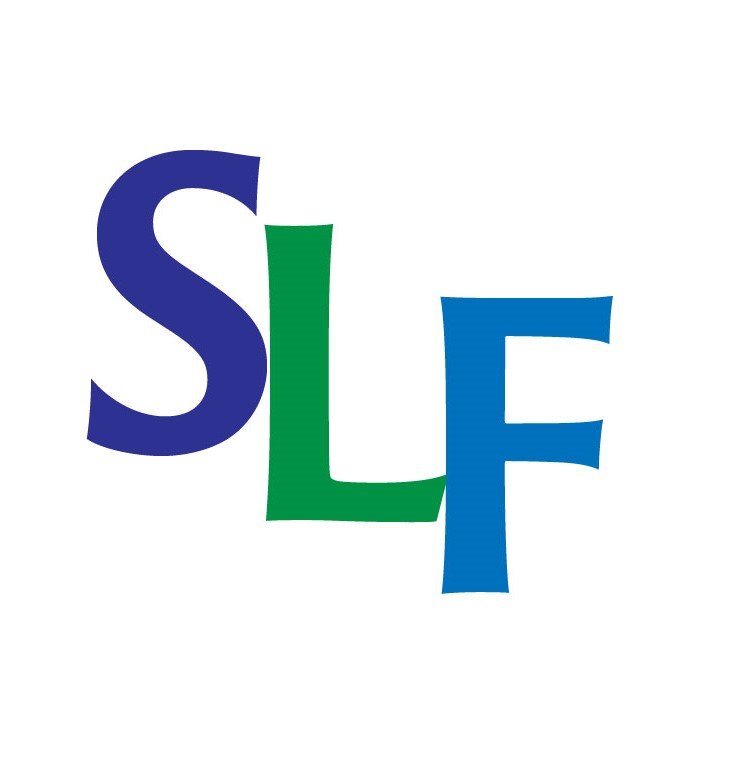
Jared Rose
Marine Science Program
University of South Carolina
Photo: Large scale laboratory growth of cryptophytes for extracting large amount of pigmentation.
Photo courtesy of J. Rose.
Jared’s Story
Jared Rose is a Ph.D. candidate in the School of Earth, Ocean, and the Environment at the University of South Carolina. Jared is from the greater Boston area where he found a love for all things marine. During his early years, he participated in multiple programs involving science, the environment, and the ocean. During his undergraduate degree at Skidmore College, Jared became especially interested in chemistry and graduated with a chemistry degree in 2019. He used his chemistry knowledge and love for the marine world to earn his master’s degree in chemical oceanography at Florida State University in 2023, where he studied phytoplankton, the base of all marine food webs, and their response to various light and iron conditions. His current work looks at the ability of algae and their physiological responses to environmental conditions, both in the field and in the laboratory. In his spare time he enjoys gaming and cheering for all Boston sports teams.
Jared’s Research
While typically unknown to most people, microscopic phytoplankton play a large role in many of the resources they use and consume. Phytoplankton are commonly used as a feed source in aquacultural practices that grow fish or shellfish in controlled environments. Phytoplankton also contain many naturally occurring dyes or other molecules that are beneficial for human health or cosmetics. In recent years, the continued overharvesting of the ocean has led to a steady rise in aquaculture as a source of commercial marine food, along with an increase in the demand for natural, safe dyes for food and cosmetics. For both these reasons, there has been a continued interest in optimizing commercial phytoplankton production to meet these growing demands. Past work has found select species of phytoplankton are better to use in sustainable aquacultural process or for other natural products. One example of such algae are known as cryptophytes which have been touted as optimal species to use as fish feed, as a source of fatty acids, and for cosmetic dyes. Cryptophytes are high in both fatty acid content that are good for fish and human health, as well as beautiful blue and red pigments called phycobiliproteins. For these reasons, multiple studies have investigated conditions to optimize cryptophyte growth to use in multiple economic processes. However, a majority of these studies did not supply a standard white light spectrum in their experimentation. White light can come from a variety of LEDs and fluorescence blubs that all have a unique spectra to which phytoplankton can be sensitive. Jared’s proposed work will investigate multiple cryptophytes suggested to be useful commercially and determine under which light LED/fluorescent lighting they produce the most pigment and grow the fastest. This work will use warm and cool LEDs, fluorescent bulbs, and red/green light, and determine which conditions are optimal. The outcome of this project aims to improve our knowledge in commercial algal cultivation to help address the growing demands of society.
Timelapse video of one of Jared’s cryptophyte cultures changing color in the light. This is a phenomenon unique to some cryptophytes and is not well known. Video courtesy of J. Rose.
Extracted phycoerythrin from the cryptophyte, Rhodomonas salina, a naturally occurring dye with a beautiful fuchsia color. Photo courtesy of J. Rose.



